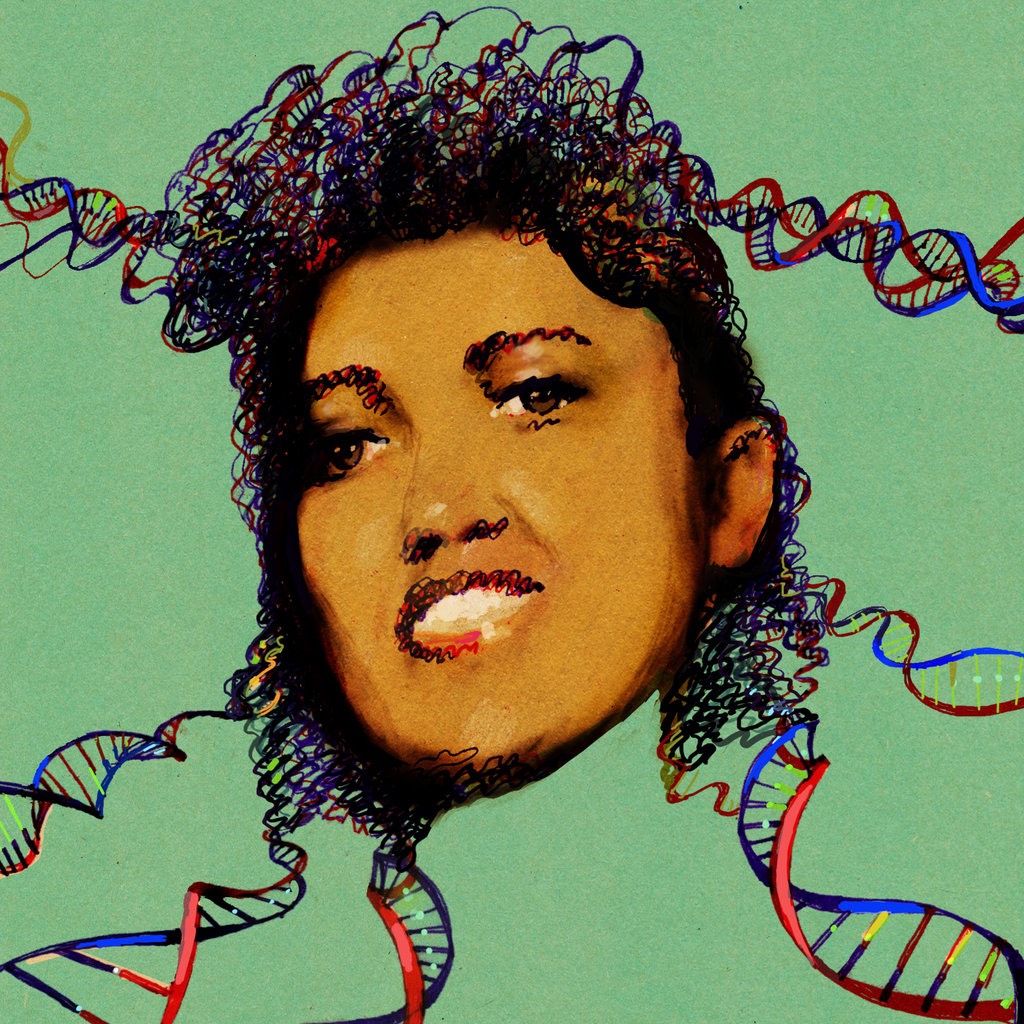Hardly anyone knew of Henrietta Lacks’ life story prior to 2010.
That year, Rebecca Skloot’s The Immortal Life of Henrietta Lacks was released, and went on to become a New York Times best-seller. The biographical book told the story of a black woman born on a tobacco farm in Roanoke, Virginia, in 1920 who revolutionized medical research and saved the lives of millions, without ever knowing it. Now, a new film by the same name starring Oprah Winfrey aims to make her life and impact more widely known.
Who exactly was Henrietta Lacks? And why is she described as the “Mother of Medicine”? Here are five fascinating facts about Lacks to better understand who she was and how she changed the world forever.

1. Henrietta Lacks died from a cancer whose cells also made her immortal.
In 1951, at the age of 31, Lacks visited Baltimore’s Johns Hopkins Hospital, which served black patients in segregated wards during the Jim Crow era, so doctors could find out what was causing pain in her lower stomach. It turned out there was a cancerous tumor that had grown at a terrifying rate on her cervix.
At the time, cervical cancer was prevalent among women and research samples were taken from those who were diagnosed with it. Richard Telinde, a doctor at Hopkins who led a research study on patients who tested positive, hoped to grow living samples from both normal and infected cells to better understand the cancer. He worked with his colleague Dr. George Gey, the head of tissue culture research at Hopkins, who was relentlessly determined to develop the first line of immortal human cells ― those that could repeatedly replicate themselves outside of the body without ever dying.
Soon after her first trip to the hospital, the excruciating pain Lacks felt began to worsen as her tumor grew, so she checked herself into Hopkins for immediate treatment through surgery. The doctor who performed the surgery then removed two dime-sized pieces of tissue from Lacks’ body ― one from the infected cervix, the other from a healthy part of the organ ― and had them handed off to Gey. He and his staff used Lacks’ samples to successfully grow the first line of immortal cells. Lacks eventually died from the cancer, leaving five young children.
However, her cells lived on ― and soon came to be known as HeLa.

2. Lacks never knew doctors took her cells ― and neither did her family, for decades.
In The Immortal Life of Henrietta Lacks, Skloot writes that while Lacks gave doctors permission to perform a surgical procedure on her, she “knew nothing about her cells growing in a laboratory.” The hospital had called Lacks’ husband, David, to tell him about her death and ask if they could do an autopsy on her. Her husband initially denied the request, but visited the hospital later that day to see Lacks’ body and eventually agreed to sign off on the autopsy because doctors said they wanted to conduct tests that may help their children, and he believed them.
Decades after Lacks’ death, Rolling Stone published a riveting piece in March 1976 that gave a detailed account of what happened to her cells and included comments from her husband. In the piece, he recounted his experience at the hospital after learning of her death and revealed that he had never explicitly been told by doctors or any official about what the samples had been used for:
“They said it wouldn’t disfigure her none, because it was all down in her womb, to begin with.” He nods. “They said it was the fastest growing cancer they’d ever known, and they was suppose to tell me about it, to let me know, but I never did hear.”
In the same interview, Lacks’ eldest son, Lawrence, told the reporter: “First we heard was about a month ago, a person called us on the phone and asked if we’d like to take a blood test. That’s the first time we heard about it.”
3. Her name was changed from Henrietta Lacks to Helen Lane.
Helen Lane had quickly become a pseudonym for Henrietta Lacks in print, which Skloot writes was apparently an intentional move made in an effort to disguise Lacks’ true identity from the public and the media. According to Skloot, one of Gey’s colleagues told her Gey himself had created the new name so the media wouldn’t discover who Lacks really was. The Minneapolis Star was the first to publish a report on Nov. 2, 1953, that more accurately identified Lacks, only the last name was incorrect: She was recognized as Henrietta Lakes.
Upon the release of the story, journalists dug in and began requesting interviews with Gey and other doctors central to the case, but they all were reluctant to release her real name at the risk of “getting into trouble,” according to the book. Skloot firmly concludes that had Lacks’ name been released to the public from the outset, it would have changed her family’s life forever.
“They would have learned that Henrietta’s cells were still alive, that they’d been taken, bought, sold and used in research without her knowledge or theirs,” she wrote.
4. HeLa cells have led to countless medical breakthroughs.
HeLa cells have entirely revolutionized medical research. The cell line can be found in labs across the world and has been used in studies that have resulted in countless breakthroughs.
The cells were used to develop the first polio vaccine in 1952 during a time when the disease swept the nation in an outbreak that left thousands of children paralyzed.
HeLa cells have also traveled to space to help scientists study the impact zero gravity has on human cells; been used to identify abnormalities in chromosomes; helped with research in the mapping of the human genome; and aided in studying the human papillomavirus, commonly known as HPV, which causes the cervical cancer that killed Lacks.
In 2014, chemists and engineers at Penn State University announced that in their study, HeLa cells had been implanted with technology that have potential to cure cancer if they are able to mechanically manipulate cells inside the body.

5. Her family, while never given compensation, says her spirit continues to live on.
Both of Lacks’ daughters have died, including Deborah, who was hugely instrumental in bringing the book to life by working with Skloot and whom Oprah portrays in the film. But her legacy lives on through her three sons, who are now decades old.
And it’s Lacks’ eldest son, Lawrence, reportedly the executor of her estate, who is leading the charge for the family to receive compensation from Johns Hopkins Hospital and others. However, the institute said in 2010 that it does not own the rights for the HeLa cell line and that they have not profited from the cells. Lawrence plans on continuing to pursue his mission.
Before Deborah’s death in 2009, she told Skloot that even though she and her siblings lost their mother, Lacks always knew how to make her presence known.
“Deborah believed Henrietta’s spirit lived on in her cells, controlling the life of anyone who crossed its path,” Skloot wrote. “Including me.”
“The Immortal Life of Henrietta Lacks” premieres on HBO on Saturday, April 22.
Read more at HuffPost.






